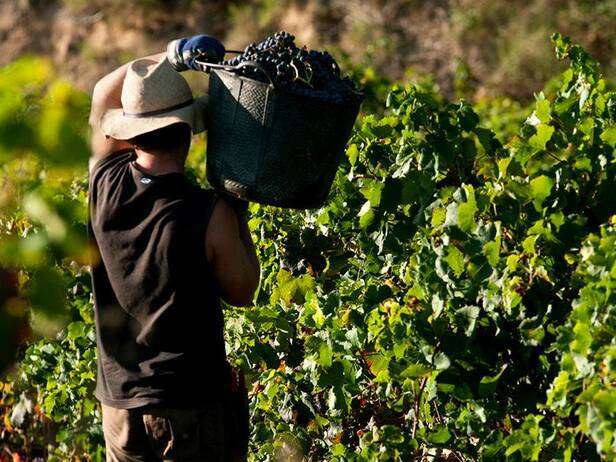
One of the greatest challenges you face as a winemaker is determining the ideal harvest date for your wine. And it is simultaneously one of the most momentous decisions in the development of a wine.
What needs to be considered when defining the harvest date?
Industrial maturity, alcoholic potential, phenolic maturity, pH, acidity, nitrogen level, grape tasting, etc.?
Wine is born from an idea , from this idea we start looking in the field for plots capable of producing the right grapes for our wine, and then express them through the winery processes most adapted to the devised wine profile. With our feet on the ground and never better said we must try to bring grapes with the desired and necessary qualities to the winery.
Many years of work with many different style wineries have taught us that economically and organoleptically it is much more profitable "to harvest based on the defined style of wine than to try to model the grape in the winery" ,
We all know that not all plots are the same and that each one gives what it can give, no more no less. Early or late plots, rainfed or irrigated, with a lot or little load, varieties with a short or long cycle ...
The harvest date has a direct impact on the profile of the wine (see our post, href="/juntos-sabemos-mas/blog/controles-maduracion-donde-esta-fruta">WHERE IS THE FRUIT??). That is why the sensible and profitable thing to do is to harvest according to the defined style of wine:
A well-defined style of wine implies knowing the grape characteristics that define that particular style. The required alcoholic concentration, the sugar load, the desired concentration and color, the pH, the malic, the profile of the fresh fruit or ripe fruit precursors, etc.
But to interpret the grape, it is important to put this data in context, for example, if we only talk about concentration it can mislead us, we can find plots with very low yield (due to deficiencies or imbalances of the plant, climatic problems, age, etc) that produce few grapes, concentrated, but not always with good maturity. This type of plot often causes problems;, the plant does not photosynthesize well, there is little sugar production and at the same time little production of anthocyanins and precursors. Paradoxically, wines with a higher alcohol content and a higher concentration of color can be produced, but this is basically due to a small grain size with a very high skin/liquid ratio, which does not necessarily imply good maturity.
To correctly interpret the grape it is always necessary to support the quantitative data with qualitative parameters that define the state of maturity and this can only be done through the physiological monitoring of the plant. It is the plant that tells us the grape profile that it will give us for this harvest.
Whatever the style of wine required, you will surely find the most suitable plots, varieties and grapes to achieve your goals in this vintage.
From AZ3 we wish you all a happy harvest.
Related news
Maturation controls Where is the fruit?
The wine consumer has increasingly more knowledge and is more demanding; they are looking for fruity wines. This requires winemakers to have better control of the raw material with which they work.
